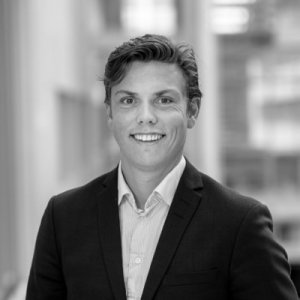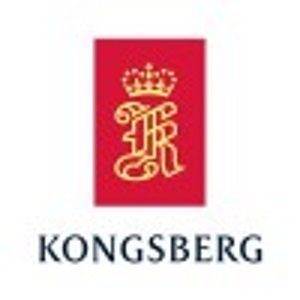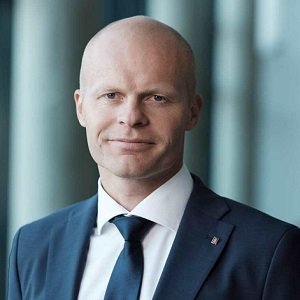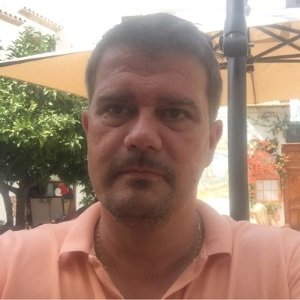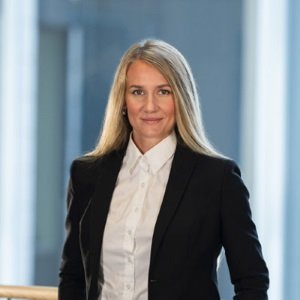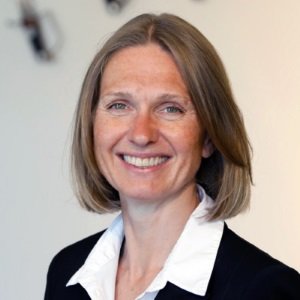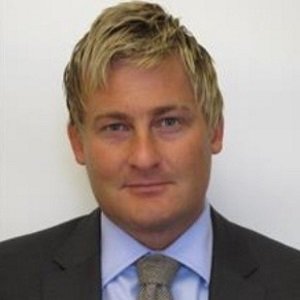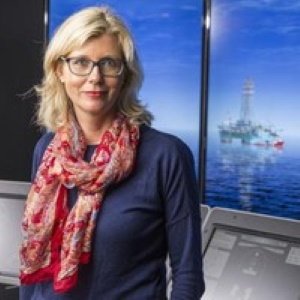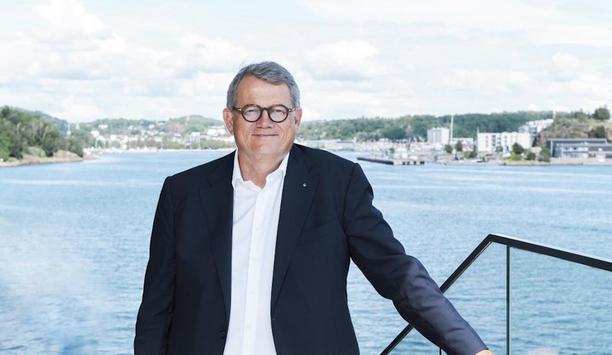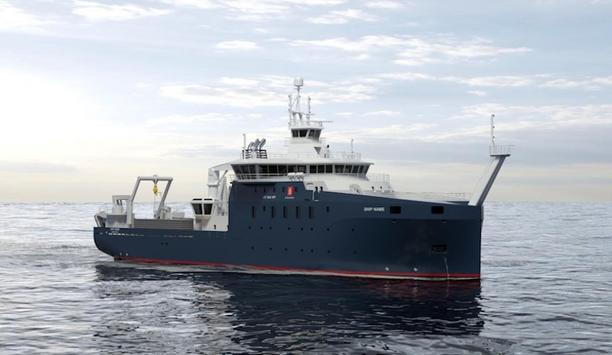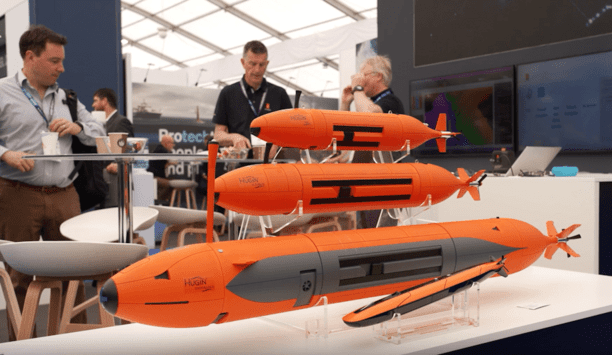Kongsberg - Experts & Thought Leaders
Latest Kongsberg news & announcements
As a rarity among Norway’s top business pioneers, Morten Fon has spent his entire 36-year career with one company, taking various positions and overseas assignments before being tapped as Jotun’s President and CEO in 2005. Since then, the Norwegian company has experienced almost uninterrupted growth to become one of the fastest growing suppliers in the global paints and coatings industry. “It’s been a remarkable journey,” says Fon. “In addition to a fantastic organisation, Jotun benefits from the continuity of our owners, the Gleditsch family, who have allowed us the freedom to think in years, not quarters,” he says. “This has helped us succeed in the highly cyclical shipping industry.” Deep roots in shipping Fon and the senior management team work hand in hand with Jotun’s Board of Directors Fon and the senior management team work hand in hand with Jotun’s Board of Directors, led by Chairman Odd Gleditsch d.y. He is the grandson of Odd Gleditsch sen., who established the company in 1926. “Today, we sell decorative paints and protective and powder coatings to a broad range of customers, but our roots are in the shipping industry,” says Fon. “In fact, we opened our Group headquarters and R&D centre here in Sandefjord in 2020 on the same piece of land as our first factory, which was built across the fjord from a shipyard. That shipyard closed in 1986, but we are still here.” A global organisation With close to 11,000 employees representing 93 different nationalities active in more than 100 countries worldwide, Jotun is a truly global organisation. Fon credits the company’s historic ties to the Norwegian shipping cluster for the company’s international success. “Shipping is a global industry, so it’s no accident that about half of our global network of 40 factories, many of which have been in operation for decades, were built near ports and shipyards. Today, we supply marine coatings to about a quarter of the world’s merchant fleet and deliver to about 1,400 ports, all over the world.” A history of innovation Jotun’s long-term investments in R&D have also helped the company differentiate itself from the competition Jotun’s long-term investments in R&D have also helped the company differentiate itself from the competition. “Jotun’s focus on innovation is part of our DNA, enabling us to develop several game-changing products over the years,” says Fon. “In addition to a network of regional R&D centres, supported by local laboratories and various test sites, we collaborate with owners, shipyards, and other stakeholders to meet or anticipate the evolving needs of the industry.” ”This process has not only led to innovations that have changed how the industry sees marine coatings, but how we see our offering.” Jotun’s Hull Performance Solutions (HPS) Jotun’s Hull Performance Solutions (HPS) is one such innovation. Launched in 2010, HPS gives owners and operators access to Jotun’s best antifouling technologies, unmatchable technical service, intelligent hull condition management and credible performance guarantees. “I remember thinking at the time that if we succeed with HPS we would change the industry,” says Fon. “It took a lot of work, but today, HPS is recognised as the industry’s most effective antifouling solution, providing owners and ship managers with the ability not only to lower fuel costs and corresponding emissions, but document their results.” From supplier to partner With more than 2000 applications to date, HPS has proven a commercial success With more than 2000 applications to date, HPS has proven a commercial success. But HPS also changed Jotun. “Thanks to HPS, we were able to gather data on hull performance taken from ships in operation, and as more customers signed up to HPS, we were able to collect the industry’s most complete historical dataset on hull efficiency,” Fon says. “This allowed us to develop fouling risk algorithms and performance analytics tools to create a suite of digital services to help customers improve hull performance.” Pressure to improve environmental performance Fon adds that as the industry faces growing pressure from cargo owners and regulators to improve its environmental performance, customers are increasingly recognising the vital role antifoulings play in reducing emissions. “Thanks to HPS, we learned that we have a lot more to offer the shipping industry than steel protection,” he says. “Put another way, they don’t want paint, they want clean hulls.” Hull skating solutions This shift in thinking would produce Jotun’s most daring innovation yet: Hull Skating Solutions This shift in thinking would produce Jotun’s most daring innovation yet: Hull Skating Solutions (HSS.) Developed in a partnership Kongsberg Maritime, Wallenius Wilhelmsen, Semcon, Telenor and DNV, HSS takes hull protection to the next level. HSS consists of five components: A high-performance antifouling coating (SeaQuantum Skate), proactive condition monitoring, high-end technical service and performance guarantees. But what makes HSS unusual is an advanced underwater robotic cleaning unit, the Jotun HullSkater. Industry’s first remotely operated robotic device “Jotun HullSkater is the industry’s first remotely operated robotic device that has been purposely designed for proactive hull cleaning,” he says. “By removing slime and fouling before organisms have time to firmly attach to the hull, the Hull Skater not only helps ship-owners to reduce fuel costs and corresponding emissions, it helps vessels stay in compliance with increasingly strict local and global regulations designed to protect marine ecosystems from invasive aquatic species.” Introducing disruptive technology Jotun’s legacy of innovation has given the organisation the confidence to make bold decisions Fon acknowledges that a remotely controlled robotic hull cleaning unit may seem an unusual investment for a paints and coatings company. But he insists that Jotun’s legacy of innovation has given the organisation the confidence to make bold decisions. “We recognise that the Hull Skater is a disruptive technology. However, if we hadn’t done this, someone else would have,” he says. Early success So far, Jotun’s investment in Hull Skating Solutions is paying off. Now in use on about 30 vessels, the concept has exceeded expectations. “Our customers already understand the benefits of a clean hull, but with growing concerns about ocean pollution and the threat of invasive species, we believe that proactive hull cleaning will allow owners to ‘future proof’ their vessels against pending regulations,” says Fon. “Jotun HullSkater may be the most innovative antifouling system available to the market today, but our focus on supporting our customers hasn’t changed in almost a century. And to me, that is something to celebrate!”
Kongsberg Discovery, a pioneer in underwater robotics and sensor technologies, has unveiled Geomatics, a new digital product designed to transform how ocean data is captured, managed, and accessed. Vessels and shore-based teams Launched at Ocean Business 2025, the solution enables both traditional and uncrewed vessel operators to streamline data operations, unlock operational insights, and improve global collaboration between vessels and shore-based teams. Geomatics is the latest addition to Kongsberg Discovery’s Blue Insight ecosystem, delivering smarter data workflows and real-time visibility across diverse ocean sensor networks. Modern survey vessels Modern survey vessels, often operating as part of multi-platform fleets with AUVs and USVs As ocean activity accelerates and initiatives like the UN Decade of Ocean Science target efforts to map the seabed by 2030, the ability to manage vast volumes of complex data – across a myriad of sensors, formats and protocols - is more critical than ever. Modern survey vessels, often operating as part of multi-platform fleets with AUVs and USVs, generate massive data streams from a wide range of environmental, meteorological and acoustic sensors. Welcoming the ‘data librarian’ "Survey teams are busy enough without wrestling with incompatible formats and fragmented systems," comments Audun Berg, EVP of Kongsberg Discovery, adding "Geomatics takes the hassle out of data management, giving users a single, intuitive platform that lets them focus on the mission – simplifying complexity and optimising efficiency." Audun Berg continues, "Think of it as the perfect librarian for ocean data: one that makes sure all data is correctly filed, easy to find, and displayed clearly, for all relevant stakeholders. We see this as the revolution in data management operators need to meet increasingly ambitious surveying and research goals." Enabling smarter ocean operations Geomatics operates as the first Blue Insight product, collecting a suite of software services on the platform Geomatics operates as the first Blue Insight product, collecting a suite of software services on the platform to simplify ocean data management. There is a compelling range of headline benefits. These include centralised data collection and logging from all onboard and remote sensors, automatic cataloguing and indexing to prepare data for exploration and analysis, and seamless data distribution to mirrored cloud environments or other data management systems. Integration of digital twin technology Visualisation of data is a key strength - empowering easier, quicker and more powerful insights – with both real-time and historical data georeferenced in dashboards, maps, and time series viewers, and a high degree of customisation available (allowing users to filter and tailor displays according to specific needs). The Geomatics architecture is AI and machine learning ready, building a foundation for the integration of digital twin technology and further enhancing processing capabilities. A new Analytics product is also under development, allowing for automated processing and in-depth data analysis. Seamless collaboration Early adopters have already been putting Geomatics through its paces ahead of the wider market launch "Geomatics has been built to enable excellence in the demanding domain of ocean research and surveying," explains Audun Berg, adding "It adds huge value by streamlining data collection, delivering real-time dashboard insights, and making data globally accessible, empowering better collaboration. From environmental monitoring to large-scale seabed mapping, Geomatics takes the pain out of juggling huge quantities of data, for faster, more efficient and accurate ocean discoveries." Early adopters have already been putting Geomatics through its paces ahead of the wider market launch, with the solution now being rolled out to several research vessels, including R/V Anna Weber-van Bosse, operated by NIOZ, the Royal Netherlands Institute for Sea Research, and Statsraad Lehmkuhl for the One Ocean Expedition (OOE). Benefit from seamless data access Commenting on the latter, Geir Pedersen, Researcher and Member of OOE’s Scientific Committee, explains: "The One Ocean Expedition is once again setting sail and will be relying on Geomatics to catalogue the vast quantity of scientific data we collect with Statsraad Lehmkuhl." Geir Pedersen adds, "It’s vital to get a complete record of the data, while we keep control of data quality under the voyage. Researchers will benefit from seamless data access both onboard and onshore as they progress their vital work." Kongsberg’s existing MDM product Survey and research teams can explore the platform by visiting this link and signing up for early access Geomatics is available from now. Survey and research teams can explore the platform by visiting this link and signing up for early access. As part of the roll-out, Kongsberg’s existing Marine Data Management (MDM) product will be merged into Geomatics. Existing customers will be offered an attractive migration package to upgrade to Geomatics, or continue with technical support for a limited time. Kongsberg Discovery’s stand at Ocean Business 2025 Those who want to experience Geomatics ‘face-to-face’ and discuss the innovation with domain experts can visit Kongsberg Discovery’s stand at Ocean Business 2025, N1/P2. The show is taking place now, 8-10 April, at the National Oceanography Centre, Southampton, UK.
Kongsberg Discovery is gearing up to make a splash at Ocean Business 2025, with high profile product demonstrations, a new digital innovation launch, and a range of domain experts on hand to help stakeholders navigate a future of ocean opportunity. The company, a global pioneer in advanced underwater robotics and sensor technology, will base itself at booth N1/P2 for the duration of the show, taking place 8-10 April at the National Oceanography Centre, Southampton, UK. Multibeam in action Kongsberg Discovery has teamed up with Saildrone to give insight into remote deep-water multibeam survey Demonstrations on all three days will showcase the EM2042 Multibeam Echosounder and Seapath 385 GNSS aided inertial navigation system onboard the Fugro FTV Xplorer vessel, in addition to dockside demos with the Flexview multibeam sonar deployed on a ROV for underwater infrastructure inspection and gas seep detection. Kongsberg Discovery has also teamed up with Saildrone to give delegates an insight into remote deep-water multibeam survey operations, with a real-time demonstration of a Saildrone Surveyor USV fitted with EM304 MKII sensors and software. Empowering developments Stene Førsund, EVP, Kongsberg Discovery, says it’ll add up to a “memorable three days for us, our partners and anyone that wants to get a taste of next generation ocean technology.” Førsund continues: “Ocean Business operates as a key hub for the ocean technology community, with a broad range of stakeholders congregating to experience innovation, share knowledge and build partnerships. For us, as an acknowledged leader in the segment, it’s a hugely important arena – both to showcase the potential of our solutions and to collaborate with others looking to empower informed, profitable and sustainable ocean development.” “We’re thrilled to be there in force, with a heavyweight team of in-house experts and some really exciting demonstrations. These will provide not only ‘first-hand’ insights into the ability of our technology, but also how we work hand-in-hand with our partners and customers for optimal results in demanding operations.” Meeting demands The Flexview demo showcases the compact multibeam sonar’s use in infrastructure inspection Each demonstration on board the Fugro vessel will last 45 minutes, with participants getting a chance to see the lightweight, robust and powerful EM 2042 in action, in conjunction with the high-precision Seapath 385, developed specifically for demanding hydrographic surveying. The Flexview demonstration, taking place dockside at set times on each day, reveals how the latest compact multibeam sonar technology can be implemented for trusted infrastructure inspection and gas seep detection. For delegates eager to experience the potential of remote operations, the Saildrone sessions on Wednesday and Thursday will show how Kongsberg Discovery’s deep-water multibeam sensors and software can be deployed to empower efficient, safe and high-quality autonomous surveying. Connecting with the future “We’re also planning on unveiling a new digital offering at the exhibition,” concludes Førsund. “This is another example of how we constantly innovate to meet market demand and create added value for our global customer base.” “Come along and chat with our expert team and you can find out more about out how we partner with users around the world to capture, process and utilise ocean data, enabling enhanced decision making, safe operations and truly game-changing ocean insights.”
Kongsberg Classic Bulbous Rudder
Kongsberg Classic Medium Rudder
Kongsberg Classic Slim Rudder







